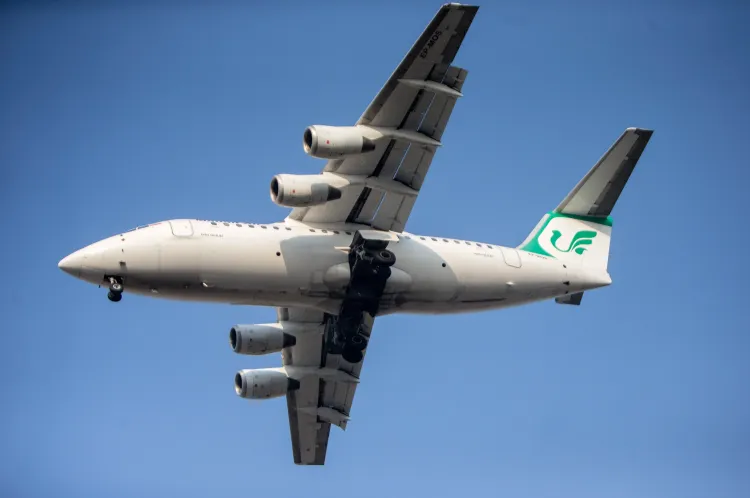Is Iran Reopening Its Central and Western Airspace for International Flights?

Synopsis
Key Takeaways
- Iran's airspace in central and western regions is now open for international flights.
- The decision comes after a temporary closure due to military conflicts.
- Safety assessments were completed by relevant authorities.
- Airspace in northern and southern regions remains closed for now.
- Recent military operations have significantly impacted Iran's nuclear facilities.
Tehran, June 29 (NationPress) Iran has declared the reopening of its airspace in central and western regions to facilitate international flights, as announced by the Roads and Urban Development Ministry.
This decision follows the endorsement from the Civil Aviation Organization (CAO) of Iran and the successful completion of security and safety evaluations by the appropriate authorities, as stated by ministry spokesman Majid Akhavan.
Akhavan noted that the country had previously reopened its eastern airspace to domestic, international, and transit flights, emphasizing that no flights would be allowed to land in or take off from Iran's airports in the northern, southern, and western areas.
In a separate announcement, the CAO indicated that the airspace in the northern, southern, and western regions would remain closed until 14:00 local time (1030 GMT) on Sunday.
Iran had closed its airspace on June 13 following Israeli airstrikes targeting Tehran and other locations. A ceasefire between the two parties was established on Tuesday after a 12-day aerial conflict.
The ministry had previously announced the reopening of its eastern airspace, with the intention of gradually restoring air traffic to pre-conflict levels, according to Xinhua.
In light of the reopening of the eastern airspace to both domestic and international flights, the spokesperson for Iran's Roads and Urban Development Ministry, Majid Akhavan, reiterated that airspace in the northern, southern, and western parts would remain closed until 14:00 local time on Friday (1030 GMT).
Earlier, the Israel Defence Forces (IDF) reported that their military operation against Iran resulted in substantial damage to three of the country’s major nuclear sites: Fordow, Natanz, and Isfahan, striking a significant blow to the Iranian regime’s nuclear capabilities.
The IDF claimed that ‘Operation Rising Lion,’ initiated on June 13, aimed to undermine Iran's nuclear and missile programs, which they believe were advancing with the ultimate goal of “destroying the State of Israel.”









